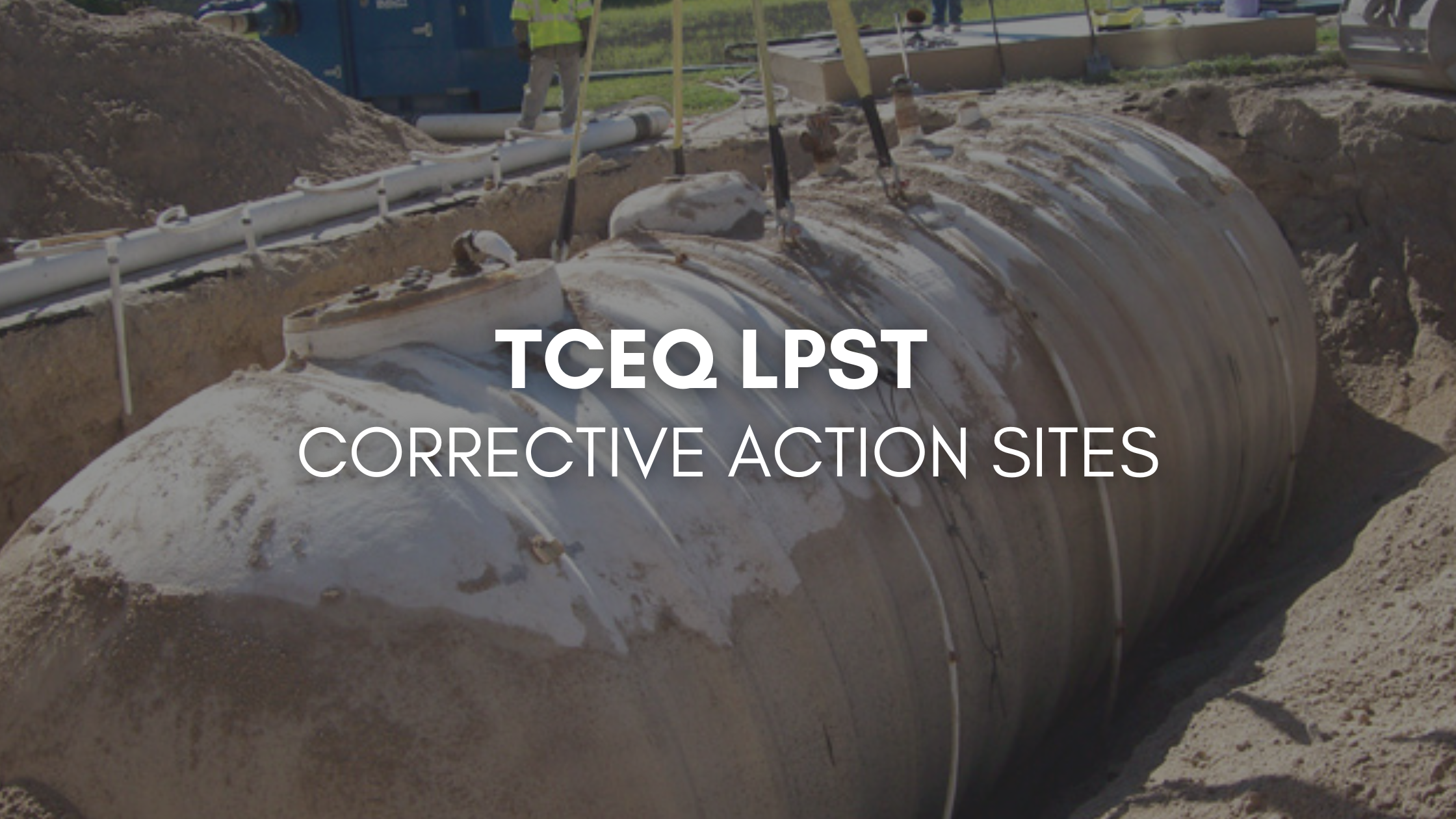
Hey there! Ever wondered about the ins and outs of the Texas Commission on Environmental Quality (TCEQ) Leaking Petroleum Storage Tank (LPST) program? If you have, we’ve got you covered! Our team specializes in navigating the complexities of LPST release reporting and corrective action sites, ensuring compliance with TCEQ regulations in the most efficient and cost-effective manner possible. So, grab a seat and let’s dive into how we can help you achieve LPST case closures while maintaining the highest standards of environmental responsibility.
Now, let’s break down some of the key strategies and processes we employ to tackle LPST cases and obtain those coveted TCEQ approvals.
TCEQ LPST Corrective Action – key strategies and processes:
Preliminary Planning & Site Conceptual Model Development:
Before diving into action, we kick things off with thorough planning and the development of a site conceptual model. This lays the groundwork for our approach, ensuring we’re tackling the unique challenges of each LPST case effectively.
Reviewing Site Information:
Knowledge is power, right? We meticulously review all available site information to gain a comprehensive understanding of the situation at hand. This allows us to make informed decisions and tailor our strategies accordingly.
Identification of Contaminants of Concern (COCs) and Concentrations:
We don’t just guess here – we identify the specific contaminants impacting the site and their concentrations in each affected medium, whether it’s soil, groundwater, vapors, or surface water. Precision is key to successful remediation.
Determining Groundwater Use Categories:
Groundwater matters, especially in Texas. We determine the appropriate beneficial groundwater use category for each site, ensuring that our actions align with regional groundwater standards and regulations.
Evaluating Vapors and Surface Water Impact:
Safety first! We thoroughly evaluate vapors to ensure that total contaminant concentrations remain below the 25 percent lower explosive limit (LEL). Additionally, we assess the impact on surface water if it exists within a quarter-mile radius of the site.
Addressing Nuisance Conditions:
We don’t overlook the little details. Nuisance conditions like the presence of nonaqueous phase liquid (NAPL) or potential for explosive vapors are carefully evaluated and addressed to ensure a safe and compliant environment.
Periodic Site Condition Evaluation:
We’re not one and done. Our team conducts periodic evaluations of existing data to establish current site conditions and monitor groundwater plume stability. This ongoing assessment ensures that our remediation efforts remain effective and sustainable over time.
Exit Criteria Evaluation:
After laying the groundwork with Plan A evaluation, we move on to evaluating sites under the Exit Criteria. This phase focuses on closing lower-risk sites quickly and efficiently, with the objective of achieving LPST case closures in a timely manner. By leveraging the Exit Criteria flowcharts and conducting risk-based assessments, we aim to expedite the closure process while upholding the highest standards of environmental stewardship.
Conclusion
So, there you have it – a glimpse into how CRG Texas approaches LPST cases with professionalism, expertise, and a commitment to environmental excellence. If you’re ready to navigate the complexities of LPST compliance with confidence, we’re here to guide you every step of the way. Let’s make environmental responsibility a priority together!

One thought on “LPST Corrective Action – TCEQ”
Comments are closed.